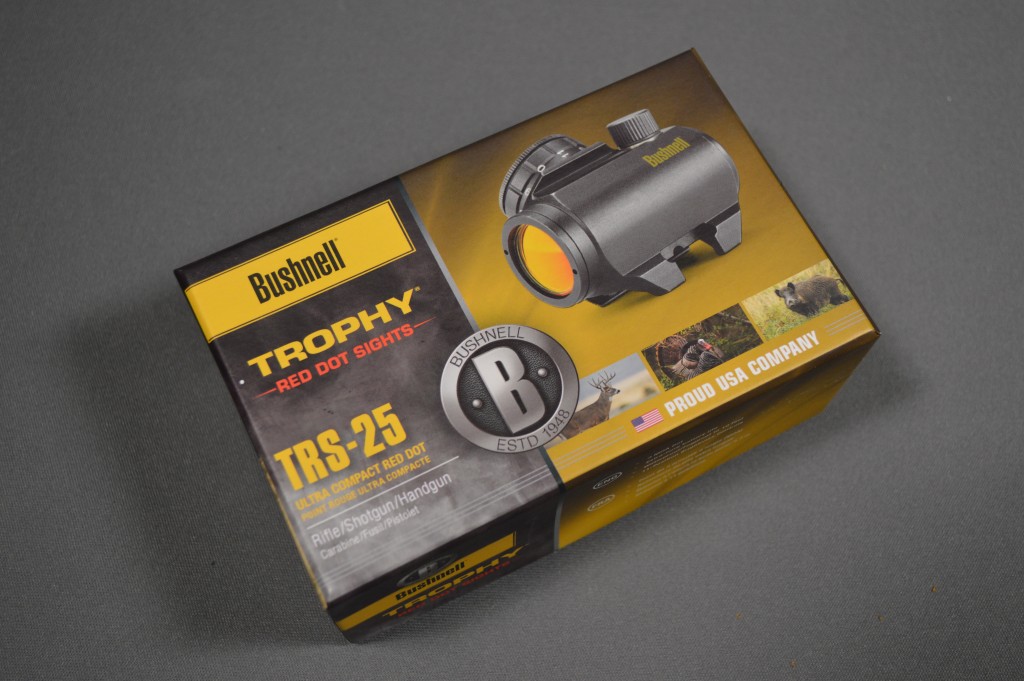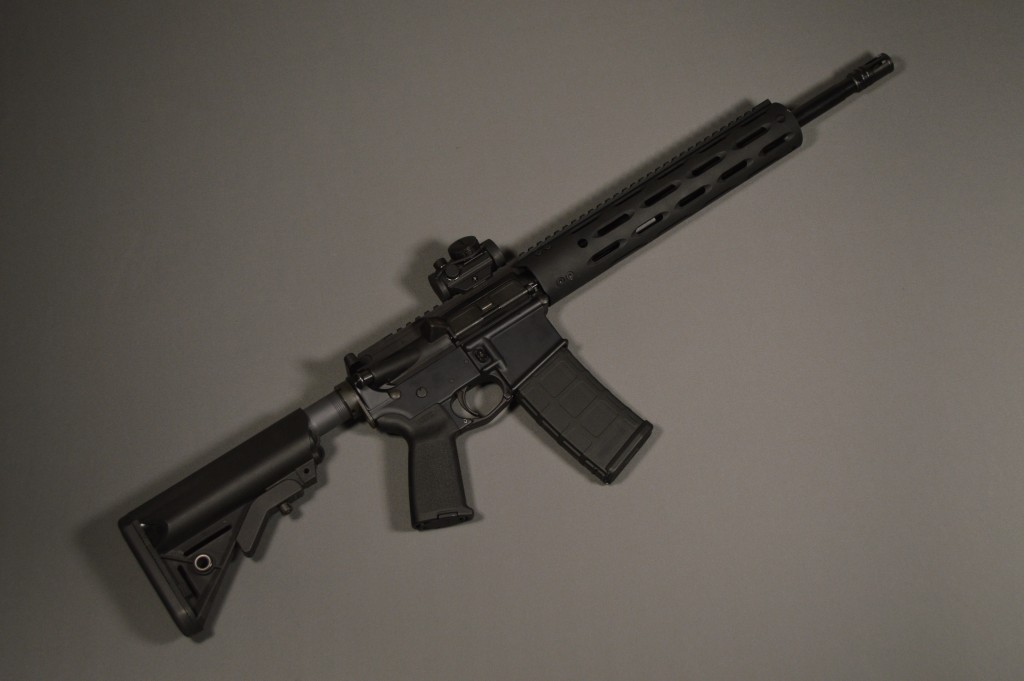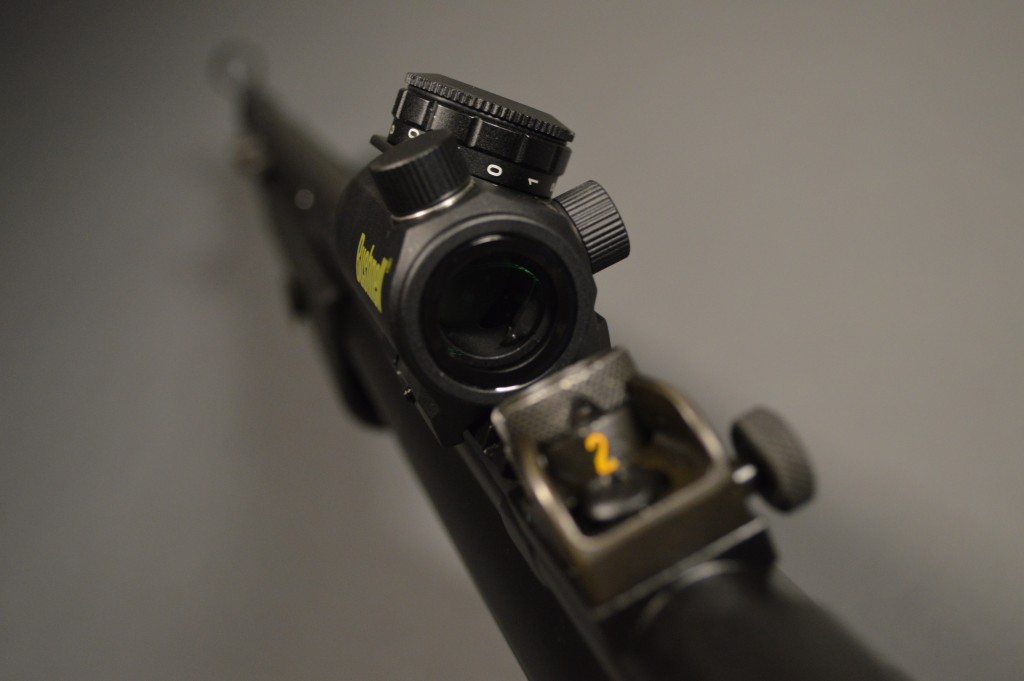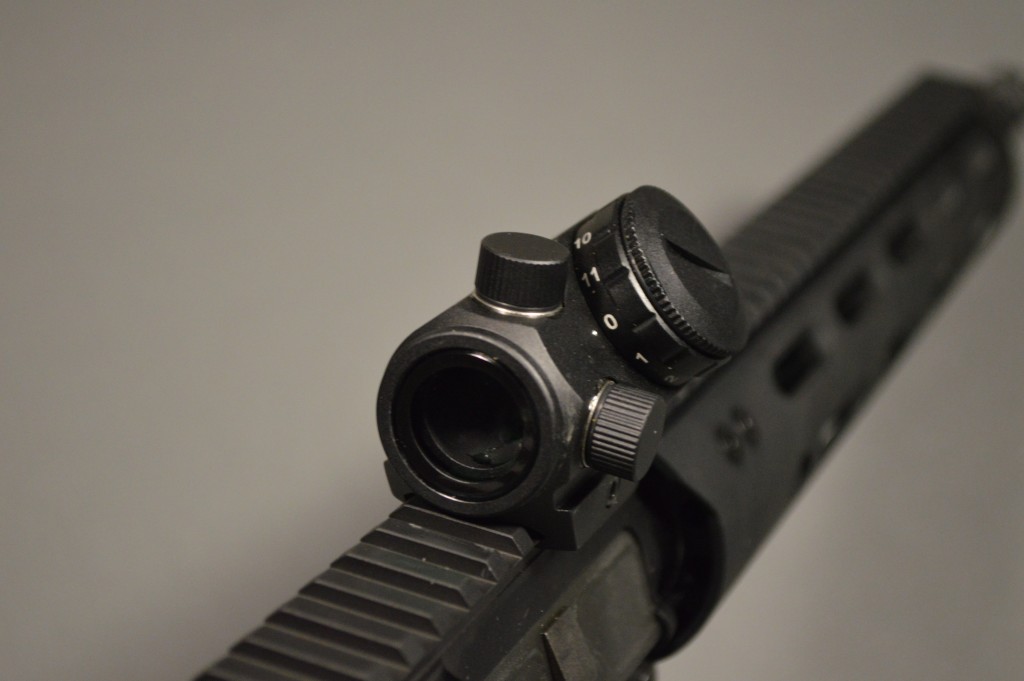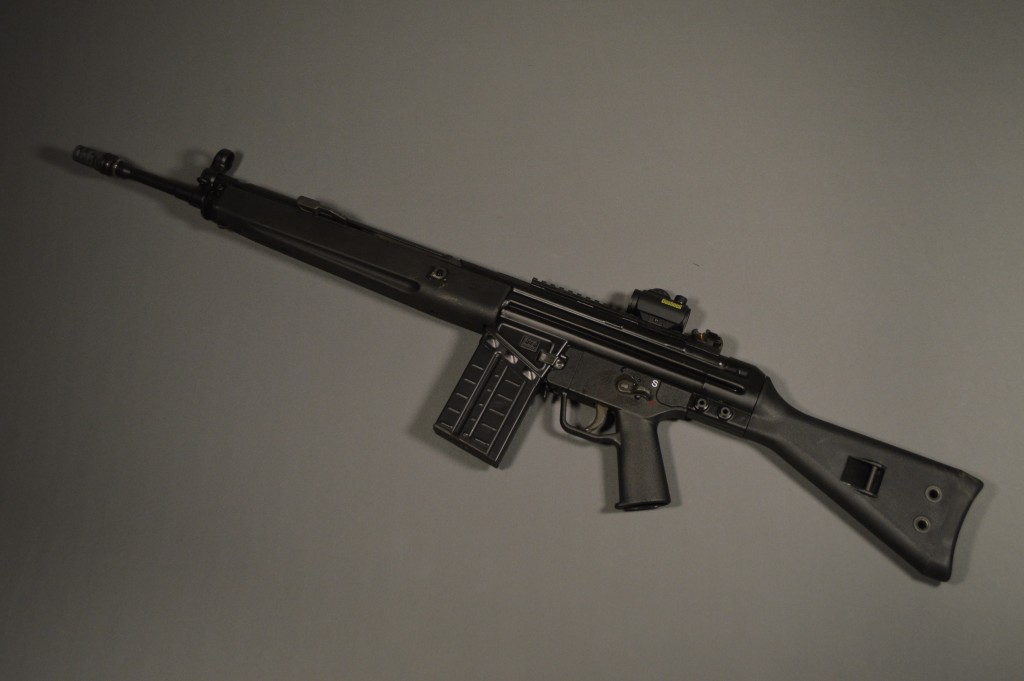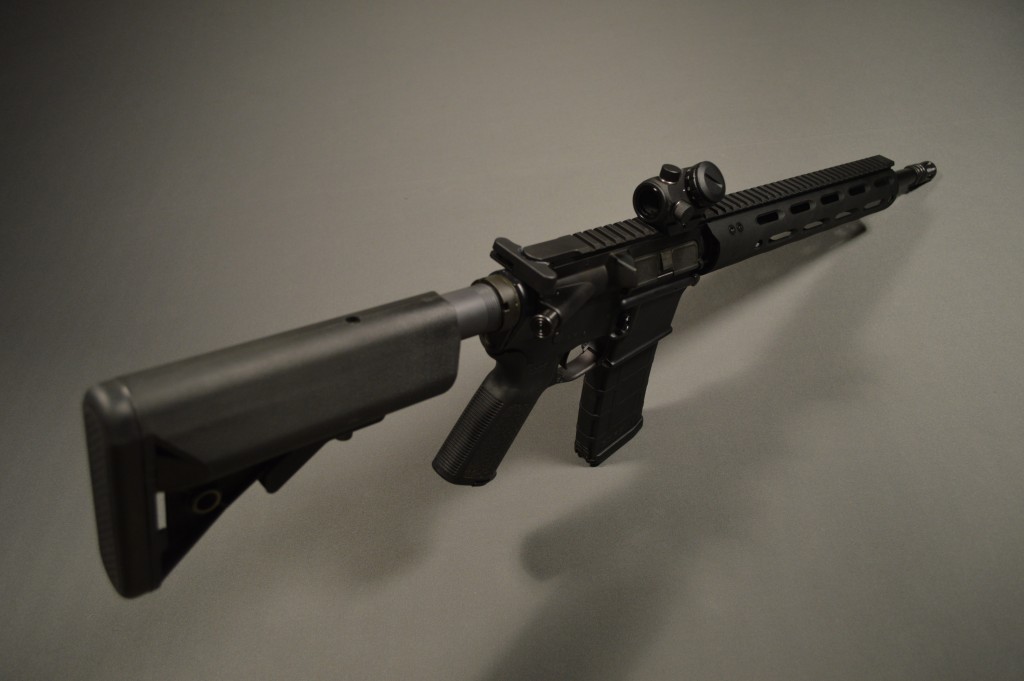Bushnell Trophy TRS-25 Red Dot Review
After picking up my first .300 BLK AR-15 upper, I found myself in a sighting conundrum. Since the upper did not come with iron sights, some form of optic seemed like the logical choice, but my budget was tight and I needed the sight to arrive as quickly as possible to facilitate my Griffin Armament Optimus review. To fill this pressing void, I turned to the speed demons at Primary Arms to see what they had on sale and came across the reasonably well-respected TRS-25 red dot from Bushnell. Going off the little bits of positive feedback I had heard for the TRS, I decided to take the leap and try it for myself.
Size
If you’ve never used a micro red dot before, the TRS-25 seems very small. The whole sight is just a bit under 2.5” in length and the distance from the top of a firearm’s rail to the center dot is just 5/8″. I’ve been using the TRS on my Atlantic Firearms PTR-91 A3R for the past few weeks and it sits at the perfect height for the rifle’s welded rail. Without a riser, I get a perfect lower 1/3 cowitness that allows me to use both the iron sights and the red dot. On my .300 BLK AR-15 upper, you can see that the sight really mounts too low. It is useable on the AR, but finding a comfortable cheek weld is difficult. Shooters who plan to add a TRS to their AR-15 or AR-10 really need a Picatinny riser of some sort.
Micro red dots like the TRS have surged in popularity primarily because they are so light. At 3.9 ounces without a riser, the TRS-25 is less than half as heavy as most traditional red dots. On top of practically any rifle, an optic like this is going to be virtually unnoticeable as far as weight is concerned.
Adjustments
The elevation and windage adjustment knobs can be found under water proof caps on the top and right sides of the scope respectively. Though they require a screwdriver or similar tool to actuate, these knobs emit positive clicks when turned and each click is equivalent to 1/2 minute of arc (MOA) in reticle shift. In my opinion, 1/2 MOA clicks are perfect for red dots as they are much quicker to zero and offer plenty of adjustment precision for an optic of this sort.
On the upper-right of the sight sits a large dial with eleven different brightness settings. As is true for many red dots, this knob is stiff to turn, but selecting different power levels is easy and each level is accompanied by a tactile click. The sight’s CR2032 battery is housed within the brightness dial.
Glass Quality
While waiting for my TRS to arrive, I spent some time looking for photos of the red dot’s sight picture so I could get a feel for its glass quality. In the images I found, I thought that the glass looked rather blue. It is common for red dots to be tinted as the front lens must be coated in order to reflect the dot back towards the shooter and cheaper optics tend to exhibit darker glass than more expensive ones.
When the sight arrived, I was very pleased to find that the online photos had mislead me. The TRS is in no way close to an Aimpoint as far as overall clarity goes, but it is a much nicer optic than I anticipated. Its glass is most certainly on par with other high-value options, like those from Primary Arms.
The TRS-25 is advertised as waterproof to a depth of ten feet. While I do not have a swimming pool to test such a claim, I did submerge the sight in a glass of water for approximately fifteen minutes. During this time, the nitrogen-purged red dot emitted no bubbles, which would indicate a possible leak. After pulling the TRS out of the glass, I wiped it dry and noted that the inside of the sight tube was perfectly dry.
Range Report
In order to give the TRS a bit of a challenge, I decided to pair it with my heavy-hitting PTR-91 A3R to see if it could truly handle the recoil of a .308 autoloader. After 100 rounds on the PTR, I am comfortable saying that the TRS should have no problem holding zero on rifles at least that powerful. For good measure, I’ve also used Bushnell’s red dot on my .300 BLK AR-15 without issue.
The aiming point on the TRS-25 is a simple 3 MOA red dot. As I mentioned previously, there are eleven different brightness adjustments available on this optic. From my experience, setting number seven is the lowest usable one in sunlight, but I tend to prefer power level eight during the day. At level eleven, the red dot had plenty of brightness to be visible in any realistic scenario, but I feel like the sight could use levels twelve or thirteen for additional power in wintery or other high-glare settings.
As far as I can tell, parallax is a non-issue with the TRS. Technically, all optics exhibit some form of parallax shift, especially when used at short ranges, but the TRS-25’s narrow tube helps to minimize the effect. As always, consistent cheek weld is critical to accurate shooting.
If there is one minor complaint I have regarding Bushnell’s TRS-25, it is that the sight offers rather poor battery life on its mid-to-higher settings. Bushnell advertises 3,000 hours of battery longevity, but my experience has left me skeptical. After accidentally leaving the sight on the eighth brightness setting, I came back a week later to find the dot very dim, even with the dial set to eleven. Though the battery used could have simply been faulty or low in charge from the start, I seriously doubt the TRS can deliver 3,000 hours of service on any usable setting before requiring a swap. I’ve heard of cases where lower power levels have been able to achieve around 2,000 hours of continuous runtime, but at the settings I prefer this kind of longevity is not realistic.
Conclusion
Even in the crowded budget optics market we have today, the Bushnell Trophy TRS-25 stands as a solid choice for cash strapped shooters. Though its battery life is just okay and the reticle’s brightness could use some work, the red dot is more durable than its price point would indicate and the TRS’s glass quality as on par with respected options like those made by Primary Arms. Enthusiasts looking for a good range optic at a low price should put the Bushnell Trophy TRS-25 on their short list of considerations.
An information security professional by day and gun blogger by night, Nathan started his firearms journey at 16 years old as a collector of C&R rifles. These days, you’re likely to find him shooting something a bit more modern – and usually equipped with a suppressor – but his passion for firearms with military heritage has never waned. Over the last five years, Nathan has written about a variety of firearms topics, including Second Amendment politics and gun and gear reviews. When he isn’t shooting or writing, Nathan nerds out over computers, 3D printing, and Star Wars.

